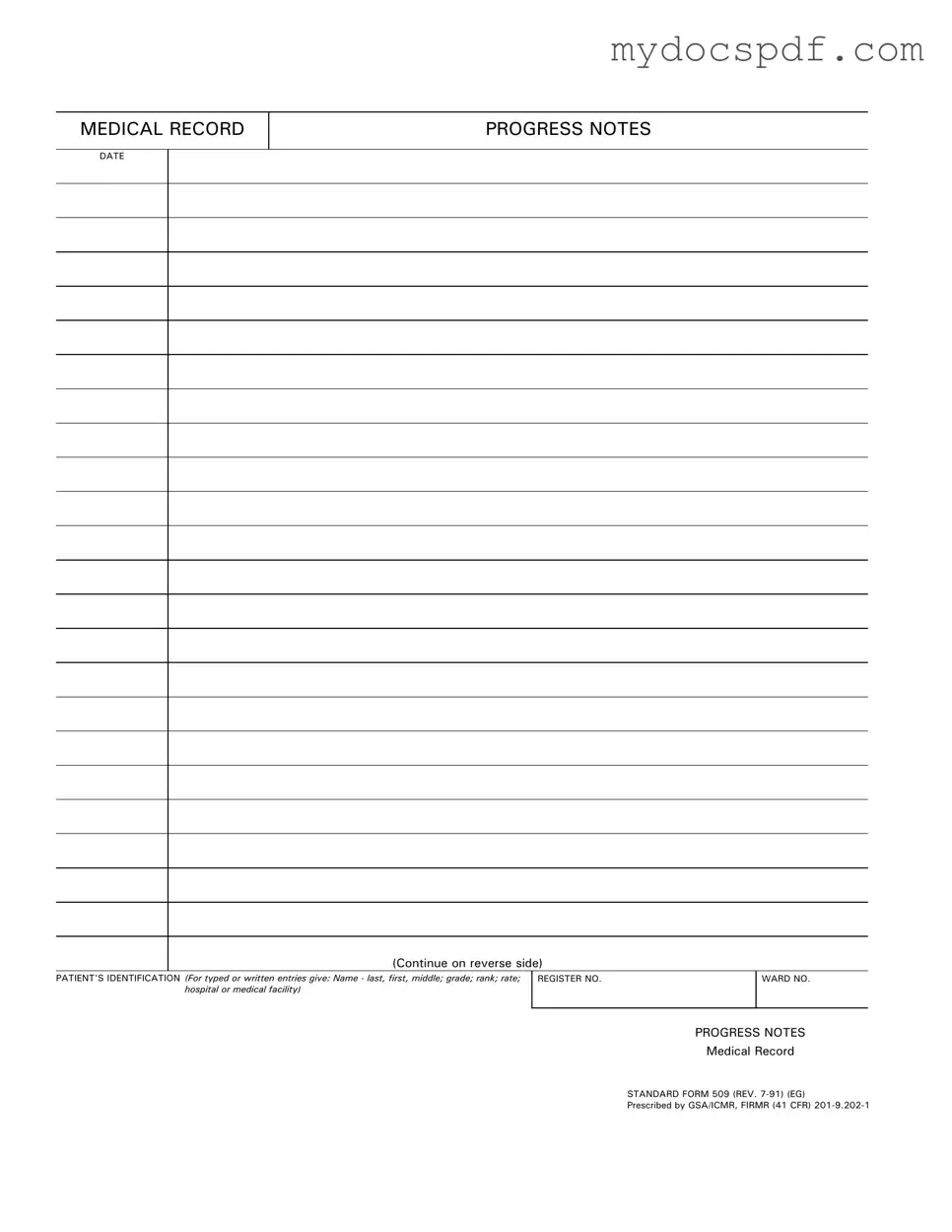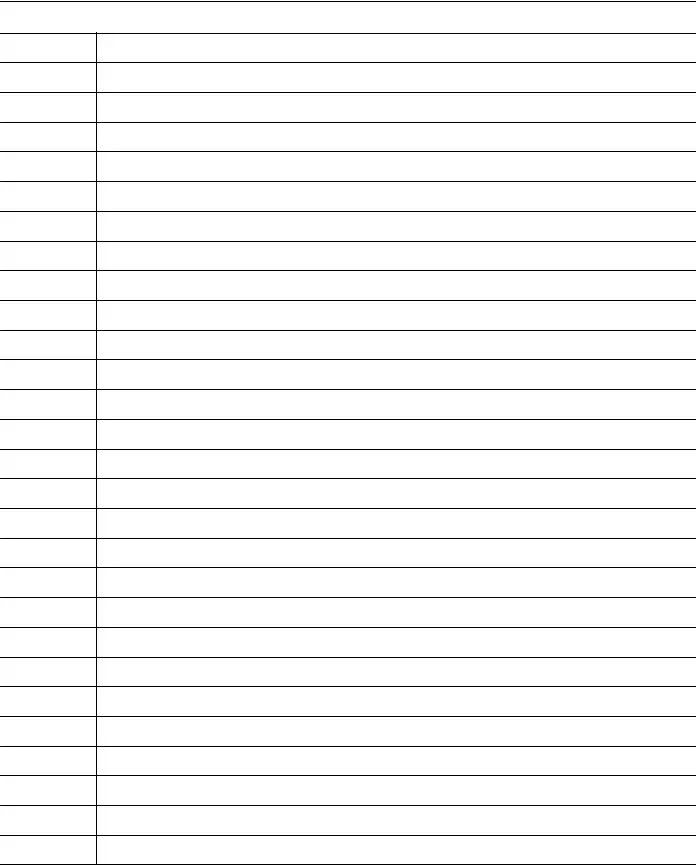The Progress Notes form serves as a crucial component in the documentation of patient care within medical facilities. Designed to capture essential information, this standardized form includes sections for the patient's identification, such as their name, grade, rank, and hospital or medical facility details. Each entry is dated, ensuring a clear timeline of the patient's medical history and treatment. The form adheres to the guidelines set forth by the General Services Administration and the Federal Information Resources Management Regulation, reflecting the importance of consistent record-keeping in healthcare. By utilizing the Progress Notes form, healthcare professionals can effectively communicate changes in a patient's condition, treatment plans, and responses to interventions, thereby enhancing continuity of care and supporting clinical decision-making. Furthermore, this form is crucial for maintaining compliance with legal and regulatory standards, ensuring that all necessary information is documented accurately and comprehensively.


